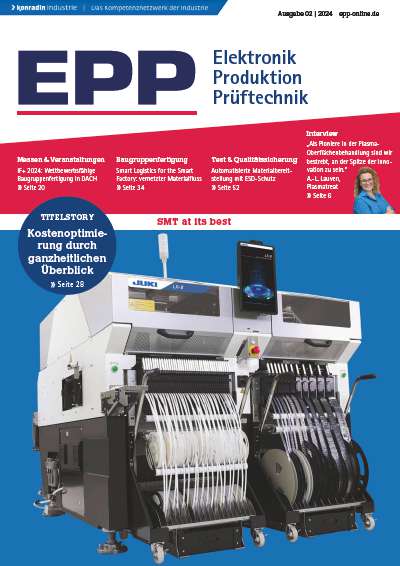In applying a metal heat sink to the back side of a flip-chip die, the thickness of the adhesive holding the heat sink in place is critical. The adhesive layer must be thick enough to attach the heat sink firmly, but not much thicker than this.
Sridhar Canumalla, Sonoscan, Inc.,Tom Adams, Consultant
An adhesive is a relatively poor transmitter of heat, and if it is too thick it will thermally insulate the heat sink, resulting in the risk that the flip chip will overheat (figure 1 and 2). Although the thickness of the buried adhesive layer can be measured by physically cutting the package open, it is more desirable to measure the layer nondestructively. Since ultrasound has been used in other applications to measure the thickness of layers, the problem of measuring the thickness of the buried adhesive was brought to the applications laboratory at Sonoscan (Elk Grove Village, IL, USA).
Reflection is key
Acoustic micro imaging systems operate in the widely used reflection mode by pulsing ultrasound into the sample and collecting the return echoes. Both pulsing and collection are performed by a scanning transducer. Since the speed of ultrasound through common production materials is some thousands of meters per second, the elapsed round-trip time is generally on the order of a few microseconds.
The return echoes come from the interfaces between dissimilar materials. When ultrasound travels downward from the transducer through homogeneous, defect-free molding compound, for example, it sends back no echoes until it reaches an interface. The first interface encountered by the ultrasonic pulse may be the die face. The molding compound has its own acoustic impedance value, calculated by multiplying the density and the speed of ultrasound through the molding compound. The silicon die likewise has its own acoustic impedance value.
The change in acoustic impedance values at the interface causes a portion of the ultrasound to be reflected. The rest of the ultrasound travels deeper and is reflected from deeper interfaces. But a gap-type defect, having an acoustic impedance of zero, reflects all of the ultrasound.
Velocity and elapsed time
When making an acoustic image, both the acoustic velocity of ultrasound through the materials in the sample and the elapsed time between echoes are generally known quantities. Thus the pulse separation technique, in which the time between echoes from progressively deeper interfaces is converted into distance, can be used to measure a vertical dimension such as a layer thickness in a straightforward manner.
But the flip-chip adhesive presented an unusual problem: the thickness of the adhesive was less than one wavelength of ultrasound at commonly used frequencies. Ultrasound pulsed by the transducer would indeed be reflected by two interfaces – namely, the one between the heat sink and the adhesive layer, and the other between the adhesive layer and the silicon. But these interfaces are so close together that they could not be separated; the A-scan or oscilloscope display would show them as a single echo. For example, the wavelength of ultrasound at 50MHz (one of the frequencies used)is approximately 30 microns, while the thickness of the buried adhesive layer was thought to be around 10 microns. The problem, then, was to find a method for measuring the thickness of a buried layer even when the pulse separation technique cannot be used because the two interfaces involved are closer together than one wavelength of ultrasound.
If the reflection coefficient of ultrasound reflected by the buried layer (which, because of its thinness, is considered as a single interface) could be measured and compared to the reflection coefficient of a reference interface, the thickness of the buried layer could be calculated. The technique which was successfully developed and which uses the reflection coefficient is called the acoustic microprobe technique.
Using 50 and 100MHzultrasound transducers
Four flip-chip packages having attached heat sinks were investigated. Analysis and acoustic imaging were performed on a C-SAM 6000 acoustic micro imaging system, using transducers of 50 and 100MHz. The heat sinks on two of the four packages were tilted because of the unevenness of the adhesive layer from one side of the package to the other (figure 3). This peculiarity made it possible to use the pulse-separation technique on the thicker parts of the adhesive in these packages.
Metal heat sinks generally have an area somewhat larger than the area of the die to which they are attached. Thus the outer portion of the heat sink meets the water couplant at its lower interface. This interface was used to create a reference signal. The return echoes were gated on this interface (gating ignores echoes from all other depths), and the reflected ultrasound was windowed using a Blackman-Harris function. A fast-fourier transform (FFT) operation was performed on this data, andthe result – the experimental transfer function – was saved.
The transducer was then moved above the buried adhesive layer, and the same operation performed, including windowing and FFT operation. Because of the thinness of the buried layer, both interfaces (between the adhesive and the heat sink, and between the adhesive and the die) were treated as a single interface. This step was carried out on multiple sites over the buried adhesive. On two of the samples the 50MHz transducer was used, and on the remaining two samples – where the dip in the transfer function lay outside the useful bandwidth of the 50MHz transducer – a 100MHz transducer was used.
The ratio of the magnitudes of the frequency spectra between the referencesignal and the layer signals was thencalculated. This transfer function, basedon acoustic measurements, was com-pared to a theoretical transfer function derived from a model using the transducer, sample material, and the geometric parameters of the sample.
From these transfer functions, an estimate of the thickness of the buried layer was made. This estimate was then used to calculate the actual thickness by using a multi-parametric nonlinear error minimization process. Minimizing the mean residual error between the experimental transfer function and the theoretical transfer function gives the correct measurement of the buried layer.
Different measurementsof high correspondency
Two of the four flip-chip samples were then physically sectioned, and the thickness of the adhesive layer measured under an optical microscope. In one of these samples, the thickness of adhesive layer varied from 10 microns at one edge to 100 microns at the opposite edge. Acoustic measurements had been made on this and other samples at measured intervals along a straight line running across the package. The comparison between the acoustic microprobe measurements of layer thickness and the optically observed measurements is shown in figure 4. Acoustic microprobe measurements for the remaining three samples displayed similar accuracy. The average error in the acoustic microprobe method, measured by comparing the results with the optical micrographs, is about 0.5 micron.
In some samples, the thickness of the adhesive layer was measured by the acoustic microprobe down to 5 microns. The lower limit of the thickness measurement of a buried layer may be considerably smaller than this. In the measurement of the thickness of a buried adhesive layer in a flip-chip package, the acoustic microprobe was able to measure thicknesses quickly, accurately, and nondestructively. It is a new tool which can significantly contribute to process development, process control, and device reliability.
zusammenfassung
Die zerstörungsfreie Messung von feinsten Klebstoffilmen in Advanced-Packages, wichtig für deren Qualitäts-sicherung, mit akustischem Mikro-Imaging basiert auf Ultraschallwellen im Bereich von 50 bis 100 MHz. Problematisch ist hierbei das differenzierte Erfassen von Lagen, deren Dicke unter der Wellenlänge des Meßsignals liegt bzw. die eng zusammenstehen. Doch zusammen mit Puls-Separation kann man Lagen differenziert mit einer Unsicherheit von nur 0,5 µm ausmessen.
Résumé
La mesure non destructive des très fins films de colle dans les Advanced-Packages, importante pour l’assurance qualité, avec la micro-imagerie acoustique, est basée sur des ondes ultrasonores de 50 à 100MHz. Le problème réside dans la différenciation des couches dont l’épaisseur est inférieure à la longueur d’onde du signal de mesure ou très proche. Mais la séparation impulsionnelle permet de mesurer des couches avec une insécurité de 0,5µm seulement.
Sommario
La misurazione non distruttiva mediante il Micro-Imaging acustico di pellicole di collante sottilissime in Advanced-Packages, importante per assicurarne la qualità, si basa su onde acustiche ad altissima frequenza fra 50 e 100MHz. Il problema sta nella rilevazione differenziata di strati il cui spessore è minore della lunghezza d’onda del segnale di misura oppure di strati molto ravvicinati. Comunque, con la separazione di impulso, è possibile misurare strati in maniera differenziata con una insicurezza di solo 0,5µm.
Fax +1-847-437-1550
EPP 189
Unsere Webinar-Empfehlung
Die 3D-Messung und Inspektion des Lotpastendrucks ist ein wichtiges Qualitätswerkzeug. Dieses funktioniert nur mit den richtigen Toleranzen und Eingriffsgrenzen.
Teilen:


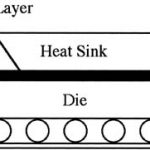
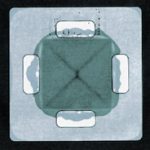
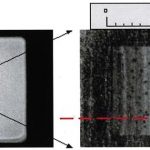
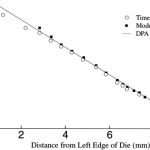
.png)



